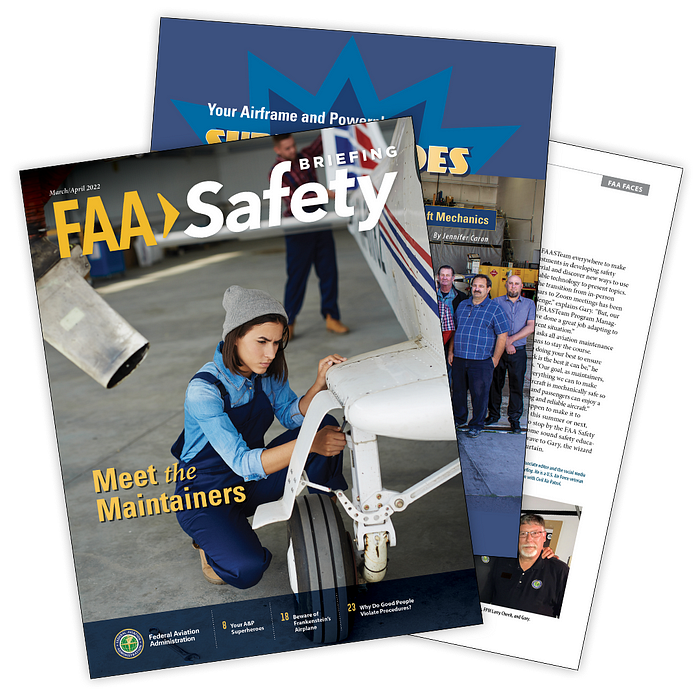
Making the Most of Maintenance

By Susan K. Parson, FAA Safety Briefing Magazine
Sending your airplane to the shop for any kind of work — especially the dreaded annual inspection — is often a nail-biting experience for pilots. Even if you “know” that your trusty mechanical bird is running well, you also know that, as the saying goes, you don’t know what you don’t know. That was the case for my flying club a few years ago. At the time, we operated two airplanes: a C182 Skylane used for travel and training and a C150 for aerial joyriding. Because of its obvious size/weight limitations, the C150 didn’t get as much flight time as it could — or should — have.
Are alarm bells sounding in your head? Somehow, we anticipated just a quick and routine annual when we sent our little bird off to the shop. I’ll spare you the suspense: we spent well over $7,000 to get our airplane back in service. Aside from not flying much, never a good thing for airplanes, it seems that the Really Good Deal we had been getting on annuals and other maintenance wasn’t such a good deal after all. Far too many issues had been overlooked or perhaps papered over. We were lucky. While the expensive annual was no fun, we wound up with an airplane that was truly airworthy — not just in the sense of having all the right documentation, but in the far more important sense of having an airplane in a safe condition for flight.

Lesson Number One for aircraft annual inspections and, in fact for many other aspects of life, is to be wary of a Really Good Deal. But there were other things we could have done. Here are a few of the lessons learned.
Fly the airplane! Life gets in the way of flying more than we might like. But if you own an airplane, letting it sit idle for long periods of time is not the way to ensure its longevity. Our C150 logged time in double digits. If you are tempted to address the issue by just running the engine(s) on the ground — don’t! Running aircraft engines on the ground for any length of time before shutting down does not allow the engine oil temperature to get hot enough to boil off the condensation and other by-products of combustion. The most common result is corrosion in the cylinders.
Pay attention. When an airplane is as familiar as your favorite pair of comfortable shoes, it can be tempting to relax and assume all is well. But is it?
Let’s start with the preflight inspection. Do you perform this task each time with care, or do you skim around the airplane without really looking because everything was fine the last time you flew? When I worked for a flight school, I taught students to use all senses. Does it look right? I required specifics — it wasn’t enough to say “this” looks “okay.” When you move control surfaces, do you hear anything unusual? Is there any sense of binding or resistance that should not exist? Smell is important too, especially for determining that you have the proper fuel.
Paying attention shouldn’t stop with the preflight inspection. At every phase of flight, you should be alert to anything that doesn’t fall into the normal range. You need to know what constitutes “normal” for your airplane. Keeping a log of key engine indicators for your airplane allows you to quickly spot anything “off” in the operation of a key instrument. The data can also help your maintainer diagnose the problem.
Postflight inspection is another opportunity to gather data that you and your maintainer can use. Too often after a successful flight, we simply secure the airplane and saunter away. But it’s a great time to check to ensure that the airplane really will be ready for the next flight.
Susan K. Parson (susan.parson@faa.gov) is editor of FAA Safety Briefing and a Special Assistant in the FAA’s Flight Standards Service. She is a general aviation pilot and flight instructor.


